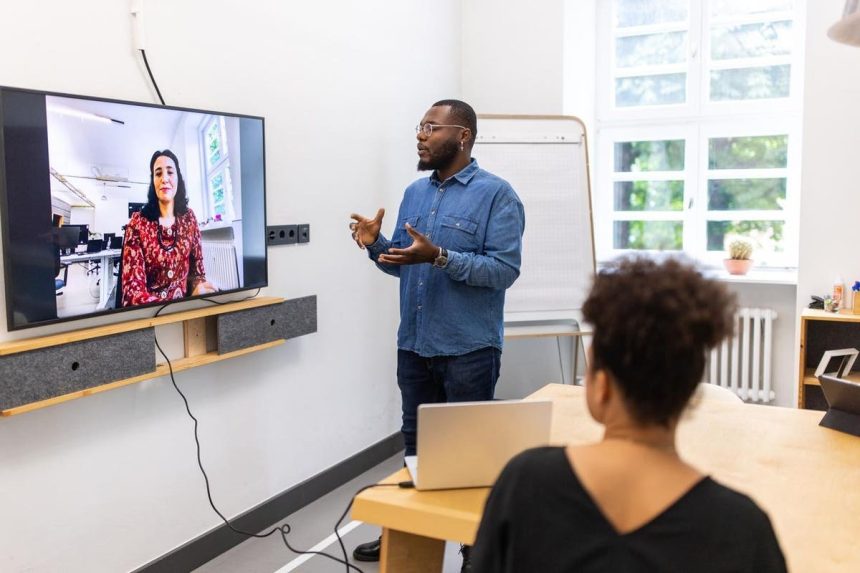Michael E. Hansen is the CEO of Cengage Group, a global edtech company that enables student choice.
For many office workers, the pandemic forced a massive remote work experiment almost overnight. Three years later, with pandemic restrictions all but eased, many organizations are increasing their calls for employees to return to the office.
However, I believe that many business leaders are making a critical mistake by being overly prescriptive about the terms of post-pandemic work, with some going as far as to take attendance or monitor keycard usage.
It’s clear that while the health crisis may have passed, the opportunity for evolving the work environment has not. The pandemic provided invaluable insights into how employees can effectively collaborate, connect and do their best work—insights that leaders cannot afford to ignore. Rather than prematurely declaring an absolute end to remote work, I think organizations should continue listening, experimenting and finding solutions tailored to their people and culture—because both clearly have changed during the pandemic.
One Size Does Not Fit All
A blanket return-to-office mandate fails to accommodate the diverse needs of different departments, teams and employees. The sales team may thrive on in-person collaboration while the engineering team enjoys the focus and flexibility of working remotely. An individual caregiver may require location flexibility while a new hire may benefit from on-site onboarding.
In my experience, the most effective approach is to empower managers to determine the working norms that enable their teams to maximize productivity. Localized hybrid models—in which managers set expectations based on team needs—are preferable to centralized policies applied universally across the organization. While decentralized policies can require more effort to develop, I find that they pay dividends by keeping decision-making close to the employee experience and recognizing that one standardized approach will not serve every team’s needs.
Making In-Person Time Intentional
At the pandemic’s onset, remote work yielded surprisingly high engagement and productivity levels. But over time, issues like Zoom fatigue set in, and remote work started to work less well. This desire to collaborate in the office to boost productivity combined with non-negotiable office leases has fueled many companies’ rush back to the office. But leaders cannot assume that merely gathering people in the same building will magically restore collaboration and solve productivity gaps. Instead, you want to be intentional about how on-site time is spent in order to drive value.
I recommend that in-person work sessions focus on relationship building, brainstorming, team bonding and other activities that genuinely benefit from face-to-face interaction. Simply reproducing a remote workday on site delivers minimal added value. The purpose and outcomes of in-person time must be clear.
For example, managers could designate one day a week for the team to come together in person and collaborate on a new product design or workshop upcoming campaigns. These in-person creative and strategic sessions allow people to feed off others’ energy when generating ideas. Teammates can also strengthen relationships and trust through activities like group lunches or outdoor team-building events
Conversely, independent focus activities, like writing, responding to emails, data entry and administrative tasks, do not require an office. Employees end up frustrated if they commute in just to sit at their desks and do the same work they could do at home. Managers should analyze their team’s workflows and interactions to determine which projects and activities are enhanced by in-person collaboration. They can then thoughtfully schedule meaningful in-person activities rather than forcing the whole typical workweek back on-site by default.
Continued Experimentation And Adaptation
The journey to define the future of work has only begun. While pre-pandemic models reflected what was effective then, I urge leaders not to default to anachronistic assumptions about what will be most effective now. You should continue tracking what works across flexible and remote models. This can be done largely by soliciting employee feedback and refining policies accordingly. Some effective experiments include:
• Assessing the impact of different schedules on team productivity. For example, comparing groups that come in-person for brainstorms and team building vs. those that interact exclusively online.
• Encouraging leaders and teams to augment their schedules to best foster work-life balance. From here, you can evaluate the impacts on employee well-being and business results.
• Using collaborative technologies. You can look into virtual whiteboards and augmented reality or virtual reality for remote design and development.
• Creating policies that directly address remote work issues like Zoom fatigue. This can include implementing no video or meeting-free days.
• Surveying teams regularly. Focus on understanding engagement levels and sentiment around hybrid policies.
The possibilities to pilot are endless. But the key is maintaining curiosity, not complacency.
Full-Spectrum Thinking
In today’s business landscape, everything moves at such a fast pace that leaders cannot afford to think about the future in absolutes or according to rigid categories based on historical norms. This will likely lead to a false sense of security. Rather, I believe effective leaders are fluid and open to change.
Leading futurist Bob Johansen outlines this with the development of his concept of full-spectrum thinking, which begs the argument that in our chaotic world, business leaders must break away from limiting categories to develop new ways of thinking and see new gradients of possibility.
In applying this concept to remote work, I see many leaders leaning into a false sense of comfort and security in pushing employees back to the office, assuming everything will be the same as it was before the pandemic. It’s not. Employees have experienced working from home, and now have a much different mindset about ways of working. We cannot turn back the wheels of time, and I think forcing employees back into an old category is potentially the worst thing business leaders can do.
Instead, look to stay open, keep learning and realize that this grand return-to-office experiment will require ongoing trial and error. Organizations that embrace flexibility and continue adapting to their people’s needs will be the ones best positioned to unleash productivity and creativity for the future of work.
Forbes Business Council is the foremost growth and networking organization for business owners and leaders. Do I qualify?
Read the full article here










